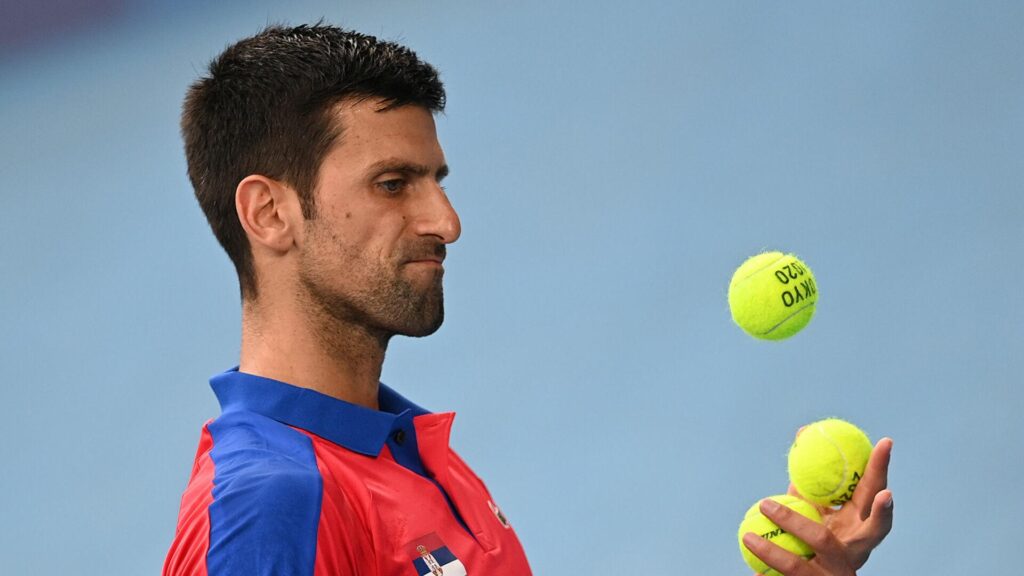
Tennis rankings in tennis give an objective measure of who is the best player, and allows players to qualify for tournaments based on merit rather than subjectivity exercised by the tournament organisers.
ATP Rankings are based on the points earned by the players in official ATP-certified men’s singles or doubles events over the preceding 52-week time frame.
However, this doesn’t mean that someone playing more tournaments will be at an advantage. There is a cap on the number of tournaments which get counted towards rankings.
The number was originally 14 events but was increased to 18 in 2000. From 2021 onwards, 19 events will be counted for the rankings.
So, even if a player participates in 21 tournaments in the past 52 weeks, only their best 19 results achieved during the time frame gets counted in the rankings, not more. Hence, the system is referred to as ‘best of’.
In an ideal scenario, a player/pair (especially top 30 ranked ones) is expected to score their ranking points from the four Grand Slams, eight mandatory ATP Masters 1000 events and seven ‘Best Other’ results from the ATP Cup, ATP Tour 500, 250, ATP Challenger Tour or ITF WTT men’s events.
However, for every Grand Slam or mandatory ATP Tour Masters 1000 tournament a player is not in the main draw owing to valid reasons (either not qualified or injured), the number of results from other eligible tournaments within the 52-week period that count towards rankings is increased by one.
For example, if a player misses one of the Grand Slams or eight-mandatory ATP Masters 1000 events, the seven ‘Best Other’ results that count towards their ranking goes up to eight to ensure the total number is 19.
Towards the end of the year, the ATP Finals are played with the top eight ranked singles players and doubles pairs preceding the tournament. For qualified players, the ATP Finals is considered as a bonus 20th tournament and the points earned counts in their ranking.
Qualifying for any tournament earns the player a base number of points and it can only increase depending on how far he advances.
However, each tournament is graded according to its prestige, history and level of participation, and consequently carries varying number of points.
The ATP Top 10 Rankings
| # | Country | Player | Age | Points | Tournaments played | Dropping |
|---|---|---|---|---|---|---|
| 1 | Serbia | Novak Djokovic | 34 | 8,420 | 13 | 90 |
| 2 | — | Daniil Medvedev | 26 | 8,410 | 23 | 180 |
| 3 | Germany | Alexander Zverev | 24 | 7,195 | 23 | 90 |
| 4 | Spain | Rafael Nadal | 35 | 7,115 | 12 | 180 |
| 5 | Greece | Stefanos Tsitsipas | 23 | 5,980 | 26 | 1000 |
| 6 | Italy | Matteo Berrettini | 25 | 4,945 | 22 | 0 |
| 7 | Norway | Casper Ruud | 23 | 4,380 | 27 | 360 |
| 8 | — | Andrey Rublev | 24 | 4,375 | 27 | 600 |
| 9 | Canada | Felix Auger-Aliassime | 21 | 3,625 | 26 | |
| 19 | South Africa | Cameron Norrie | 26 | 3,440 | 27 |
ATP Rankings are updated Sunday night (ET) after tournaments end.

The calculation mechanism for WTA Rankings for women’s tennis, including the 52-week rolling window, is similar to the ATP one, except for the cap on the number of tournaments.
A player’s WTA ranking is determined by her best results at a maximum of 16 tournaments for singles and 11 for doubles. These must include points from the four Grand Slams and four mandatory WTA 1000 tournaments (Indian Wells, Miami, Madrid, Beijing), wherever possible.
Barring these eight, ‘Best Other’ results from other WTA-approved events get counted. Like ATP, if someone doesn’t qualify or has to sit out one of the Grand Slams or four mandatory WTA 1000 events due to valid reasons, it gets covered by another ‘Best Other’ result.
Like the ATP Finals, the WTA Finals can be a bonus tournament for whoever qualifies. However, unlike the ATP Finals, where ATP Rankings determine qualification, the WTA Finals qualifiers list is based on a different leaderboard maintained specifically for the tournament.
In order to appear on the WTA rankings, players must earn ranking points in at least three tournaments or score at least 10 singles or doubles ranking points.
The WTA ranking points distribution is also slightly different from how ATP operates.
The WTA Top 10 Rankings
| # | Country | Player | Age | Points | Tournaments played |
|---|---|---|---|---|---|
| 1 | Poland | Iga Swiatek | 20 | 6,711 | 16 |
| 2 | Czech Republic | Barbora Krejcikova | 26 | 4,975 | 25 |
| 3 | Spain | Paula Badosa | 24 | 4,885 | 29 |
| 4 | — | Aryna Sabalenka | 23 | 4,711 | 20 |
| 5 | Greece | Maria Sakkari | 26 | 4,705 | 18 |
| 6 | Estonia | Anett Kontaveit | 26 | 4,511 | 21 |
| 7 | Czech Republic | Karolina Pliskova | 30 | 4,252 | 16 |
| 8 | USA | Danielle Collins | 28 | 3,151 | 17 |
| 9 | Tunisia | Ons Jabuer | 27 | 3,095 | 19 |
| 10 | Spain | Garbiñe Muguruza | 28 | 3,070 | 18 |
